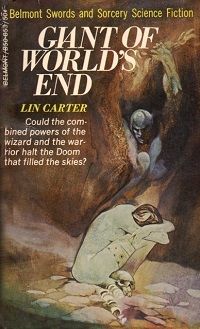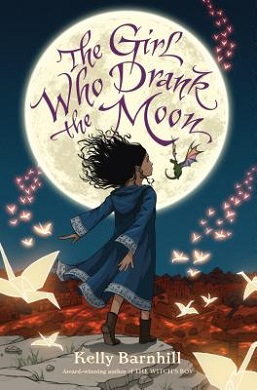Plot summary
A physical chemist and his wife (the MacRaes), who have been in residence in Luna City on the Moon for some time, spend much of their time volubly regretting having ever left Earth. When this attitude results in social conflict with "Loonies" who love their home, the couple feels isolated, misunderstood, and put-upon. They decide to return to "dirt-side", only to discover that the Earth of their imaginations bears only the faintest of resemblances to the actuality, which includes things unheard of in Luna, like smog, unpleasant weather, the common cold, and repairmen who refuse to make house calls. Ultimately, they discover that all they really want is to go back to Luna City, where they are welcomed with open arms by their peers (now that they have realized that the Moon is "home" after all) and settle down to be happy "Lunatics".

The Moon Is a Harsh Mistress is a 1966 science fiction novel by American writer Robert A. Heinlein about a lunar colony's revolt against absentee rule from Earth. The novel illustrates and discusses libertarian ideals. It is respected for its credible presentation of a comprehensively imagined future human society on both the Earth and the Moon.

"The Black Pits of Luna" is a science fiction short story by American writer Robert A. Heinlein, about a Boy Scout on a trip to the Moon and his novel way of finding his lost brother. Included as part of his Future History, it originally appeared in The Saturday Evening Post, January 10, 1948, and was collected in The Green Hills of Earth.
"The Green Hills of Earth" is a science fiction short story by American writer Robert A. Heinlein. One of his Future History stories, the short story originally appeared in The Saturday Evening Post, and it was collected in The Green Hills of Earth. Heinlein selected the story for inclusion in the 1949 anthology My Best Science Fiction Story. "The Green Hills of Earth" is also the title of a song mentioned in several of Heinlein's novels.
"The Menace From Earth" is a science fiction short story by American writer Robert A. Heinlein, first published in the August 1957 issue of The Magazine of Fantasy & Science Fiction.
"—We Also Walk Dogs" is a science fiction short story by American writer Robert A. Heinlein. One of his Future History stories, it was first published in Astounding Science Fiction and collected in The Green Hills of Earth.

The City and the Stars is a science fiction novel by British writer Arthur C. Clarke, published in 1956. This novel is a complete rewrite of his earlier Against the Fall of Night, Clarke's first novel, which had been published in Startling Stories magazine in 1948 after John W. Campbell, Jr., editor of Astounding Science-Fiction, had rejected it, according to Clarke.

First Men in the Moon is a 1964 British science fiction film, produced by Charles H. Schneer, directed by Nathan Juran, and starring Edward Judd, Martha Hyer and Lionel Jeffries. The film, distributed by Columbia Pictures, is an adaptation by screenwriter Nigel Kneale of H. G. Wells' 1901 novel The First Men in the Moon.

Destination Moon is a 1950 American Technicolor science fiction film, independently produced by George Pal and directed by Irving Pichel, that stars John Archer, Warner Anderson, Tom Powers, and Dick Wesson. The film was distributed in the United States and the United Kingdom by Eagle-Lion Classics.
The Eight Worlds are the fictional setting of a series of science fiction novels and short stories by John Varley, in which the Solar System has been colonized by human refugees fleeing an alien invasion of the Earth. Earth and Jupiter are off-limits to humanity, but Earth's Moon and the other worlds and moons of the Solar System have all become heavily populated. There are also minor colonies set in the Oort cloud at the edge of the Solar System. Faster than light travel is not possible, though it's mentioned that test-flights will begin soon at the end of The Golden Globe, and the species has not as yet managed to extend itself to other stars.

Inconstant Moon is a science fiction short story collection by American author Larry Niven that was published in 1973. "Inconstant Moon" is also a 1971 short story that is included in the collection. The title refers to "O, swear not by the moon, th' inconstant moon", a quote from the balcony scene in William Shakespeare's Romeo and Juliet. The collection was assembled from the US collections The Shape of Space and All the Myriad Ways.

Subterranean fiction is a subgenre of adventure fiction, science fiction, or fantasy which focuses on fictional underground settings, sometimes at the center of the Earth or otherwise deep below the surface. The genre is based on, and has in turn influenced, the Hollow Earth theory. The earliest works in the genre were Enlightenment-era philosophical or allegorical works, in which the underground setting was often largely incidental. In the late 19th century, however, more pseudoscientific or proto-science-fictional motifs gained prevalence. Common themes have included a depiction of the underground world as more primitive than the surface, either culturally, technologically or biologically, or in some combination thereof. The former cases usually see the setting used as a venue for sword-and-sorcery fiction, while the latter often features cryptids or creatures extinct on the surface, such as dinosaurs or archaic humans. A less frequent theme has the underground world much more technologically advanced than the surface one, typically either as the refugium of a lost civilization, or as a secret base for space aliens.

The First Men in the Moon is a scientific romance, originally serialised in The Strand Magazine and The Cosmopolitan from November 1900 to June 1901 and published in hardcover in 1901, by the English author H. G. Wells, who called it one of his "fantastic stories". The novel tells the story of a journey to the Moon undertaken by the two protagonists: a businessman narrator, Mr. Bedford; and an eccentric scientist, Mr. Cavor. Bedford and Cavor discover that the Moon is inhabited by a sophisticated extraterrestrial civilisation of insect-like creatures they call "Selenites". The inspiration seems to come from the famous 1865 book by Jules Verne, From the Earth to the Moon, and the opera by Jacques Offenbach from 1875. Verne's novel also uses the word "Selenites" to describe inhabitants of the Moon.
The fictional portrayal of the Solar System has often included planets, moons, and other celestial objects which do not actually exist in reality. Some of these objects were, at one time, seriously considered as hypothetical planets which were either thought to have been observed, or were hypothesized to be orbiting the Sun in order to explain certain celestial phenomena. Often such objects continued to be used in literature long after the hypotheses upon which they were based had been abandoned.
Delos David Harriman, known as D.D. Harriman, is a character in the fiction of science fiction author Robert A. Heinlein. He is an entrepreneurial businessman who masterminded the first landing on the Moon as a private business venture. His story is part of Heinlein's Future History.
Target Luna was a British television serial broadcast by ABC Weekend TV in April 1960. It was written by Malcolm Hulke and Eric Paice, directed by Adrian Brown and produced by Sydney Newman who later co-created Doctor Who for the BBC. The first serial featured Frank Finlay as Conway Henderson and Michael Craze as Geoffrey Wedgwood. The success of the Target Luna spawned three sequels: Pathfinders in Space, Pathfinders to Mars and Pathfinders to Venus, starring Gerald Flood and Stewart Guidotti in the recast roles, as Henderson and Geoffrey respectively.

Silk is a superhero appearing in American comic books published by Marvel Comics. Created by Dan Slott and Humberto Ramos, she first appeared in The Amazing Spider-Man #1. Silk is the alias of Cindy Moon, a Korean-American student who was bitten by the same radioactive spider that gave Peter Parker / Spider-Man his powers. She was a member of the Spider-Army / Web-Warriors and the Agents of Atlas.

Luna: New Moon is a 2015 science fiction novel by British author Ian McDonald. It is the first of a three-part series that also includes Luna: Wolf Moon and Luna: Moon Rising. The novel explores the dangerous intrigue that surrounds the powerful Corta dynasty, one of the five families who control industry on the Moon. Optioned for development as a television series before it was released, the novel has been called "Game of Thrones in space".

Giant of World's End is a fantasy novel written by Lin Carter set on a decadent far-future Earth in which all the world's land masses have supposedly drifted back together to form a last supercontinent called Gondwane. The book is chronologically the last in Carter's Gondwane Epic, five prequel novels set earlier in time being issued later. It was first published in paperback by Belmont Books in February 1969. The first British edition was issued in paperback by Five Star in 1972. The book has been translated into Polish.

The Girl Who Drank the Moon is a 2016 children's book by Kelly Barnhill. The book tells how Luna, after being raised by a witch named Xan, must figure out how to handle the magical powers she was accidentally given. She must control her powers before it's too late. The book received the 2017 Newbery Medal.











